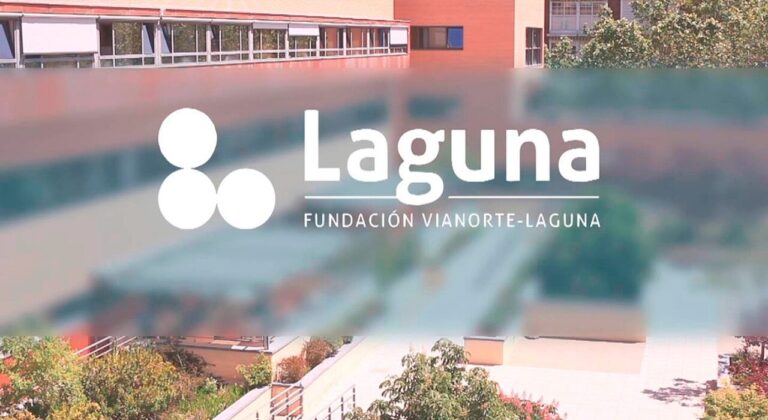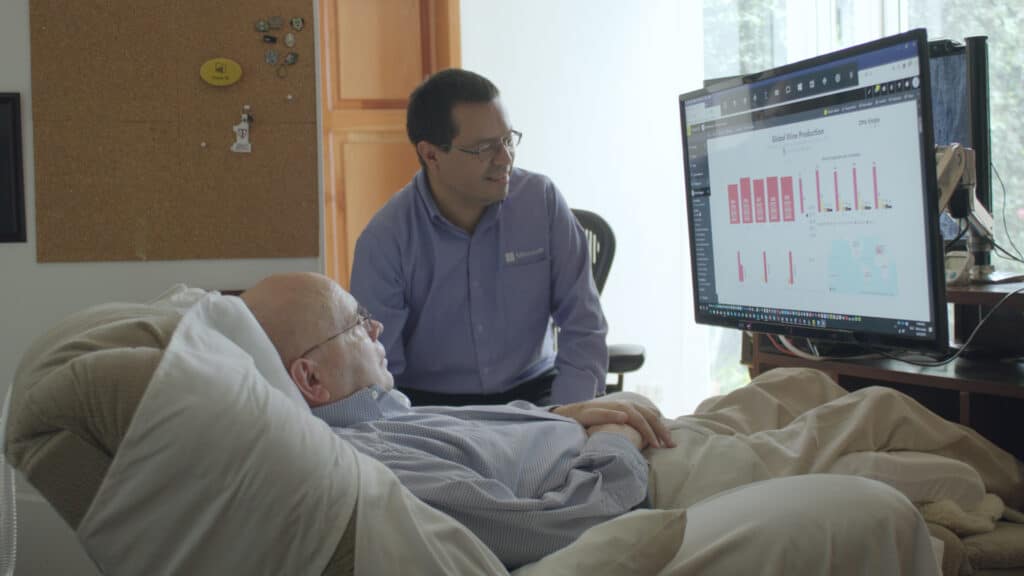Otto Knoke operates his computer using an eye-tracking software (photo: Microsoft)
Artificial intelligence (AI) is increasingly present in our daily lives. Nowadays, turning on your lights at home can be done with a simple command. Technologies like this are especially useful for one sector of the population: people with disabilities.
One of the main benefits that AI has brought with it has been making access to information and communication by the media and via other formats easier. Equally beneficial, it’s also helped health personnel and caregivers, thanks to tools that make it possible to connect more deeply with patients with disabilities.

Poland is at the forefront of this type of technological advance with its “Insension” project. The project harnesses AI within a daycare facility for disabled children so that its staff can understand what children with hearing and verbal-based disabilities or mobility impairment want to communicate more easily through the use of signals. Through videos and recordings, an AI system analyzes each of the children’s movements, gestures or sounds and manages to decipher what they mean for each particular child.
Large tech companies seek to improve the communication channels available for people with disabilities
Just as AI is used to support healthcare personnel, it also contributes in other ways. Gregorio Saravia Méndez, member of the Spanish Committee of Representatives of People with Disabilities (CERMI), comments to Aceprensa that “artificial intelligence can be used at the service of people with intellectual disabilities who have difficulty with reading comprehension. In this sense, it can be combined with easy read , improving reading accessibility according to the specific needs of each person”.
Tech giants get on board
Companies at the forefront of tech innovation also are seeking to improve the communication channels available to people with disabilities through AI. Microsoft is just one of the Tech Giants that has hopped on the wagon, incorporating Eye Control into its technology, an operating system created in 2018 that makes tasks which previously required using a physical mouse and keyboard possible for individuals with severe mobility issues using only their eyes.
This program has been more than tested: Microsoft shared Guatemalan BI expert Otto Knoke’s case in 2018. Thanks to the technology, he was able to continue working despite the loss of some of his faculties. In 1998, Knoke was diagnosed with amyotrophic lateral sclerosis – the same disease as astrophysicist Stephen Hawking – which led him to lose, first, the movement of his arms and hands, then that of his legs, and finally, his ability to speak.
This forced him to have to resign from his job as CEO of Bancared, a company which creates banking systems and ATMs throughout Latin America. After learning about the Eye Control program, he was able to go back to work and founded a company dedicated to analyzing data from different industries in Guatemala.
Like Microsoft, Google has also used AI to create apps that improve the quality of life for people with disabilities. Lookout, for example, assists people with low vision or blindness. Using the individual’s camera on their cell phone, the app makes it easier to get more information about their surroundings quicker, making tasks like sorting mail or putting away groceries easier. The tech giant has also developed another AI-infused application called Live Caption, a kind of virtual translator that gives a verbal description of images and reads messages as they reach users’ devices.
The most recent application that Google unveiled is called Project Relate. The app facilitates communication for people with speech impairments, as it’s been designed so that users can be understood by their mobile devices. In this way, they can compose messages using their own voice.
Enhamed Enhamed Mohamed Yahdih, Spanish blind Paralympic medalist, has benefited from several technological tools developed by Google. In an interview with El País, he mentioned that, through the apps, he’s been able to get to know the world more fully and form a more concrete idea of the things around him.
AI can make life easier for people with disabilities, but there are challenges and risks that come along with its use as well. One of these is due to the fact that operating systems collect user data, and in the case of people with disabilities, it is especially necessary to safeguard their privacy, since their profiles include information about their physical conditions, which could expose them to discrimination or danger.
Translated from Spanish by Lucia K. Maher
